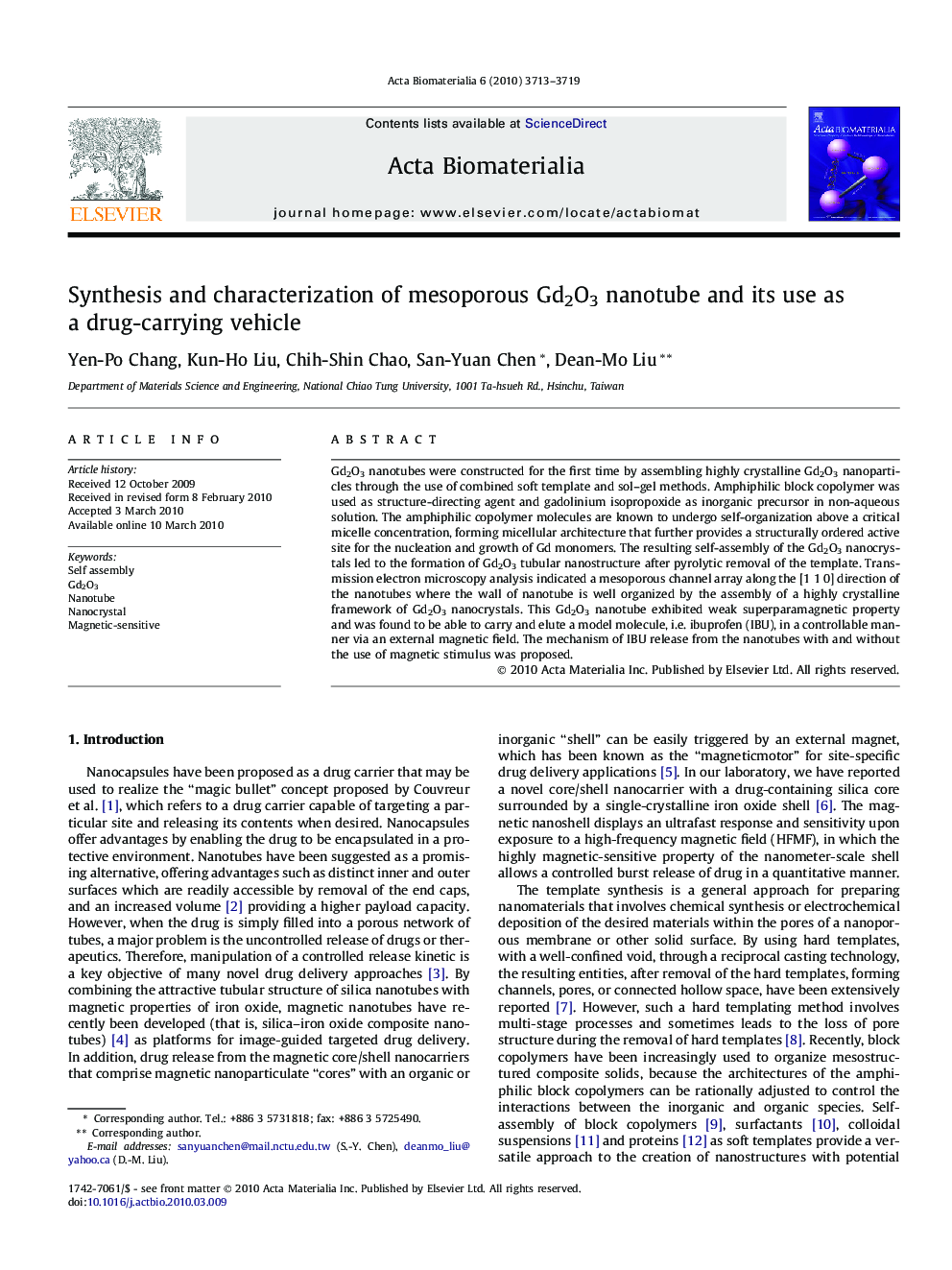| Article ID | Journal | Published Year | Pages | File Type |
|---|---|---|---|---|
| 2167 | Acta Biomaterialia | 2010 | 7 Pages |
Gd2O3 nanotubes were constructed for the first time by assembling highly crystalline Gd2O3 nanoparticles through the use of combined soft template and sol–gel methods. Amphiphilic block copolymer was used as structure-directing agent and gadolinium isopropoxide as inorganic precursor in non-aqueous solution. The amphiphilic copolymer molecules are known to undergo self-organization above a critical micelle concentration, forming micellular architecture that further provides a structurally ordered active site for the nucleation and growth of Gd monomers. The resulting self-assembly of the Gd2O3 nanocrystals led to the formation of Gd2O3 tubular nanostructure after pyrolytic removal of the template. Transmission electron microscopy analysis indicated a mesoporous channel array along the [1 1 0] direction of the nanotubes where the wall of nanotube is well organized by the assembly of a highly crystalline framework of Gd2O3 nanocrystals. This Gd2O3 nanotube exhibited weak superparamagnetic property and was found to be able to carry and elute a model molecule, i.e. ibuprofen (IBU), in a controllable manner via an external magnetic field. The mechanism of IBU release from the nanotubes with and without the use of magnetic stimulus was proposed.
